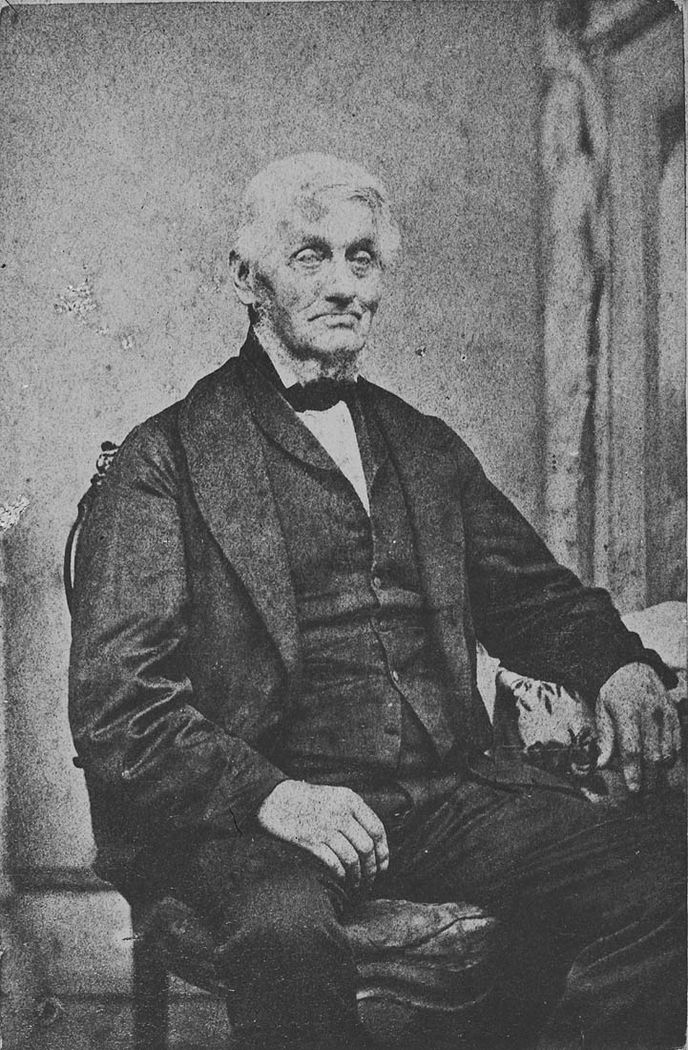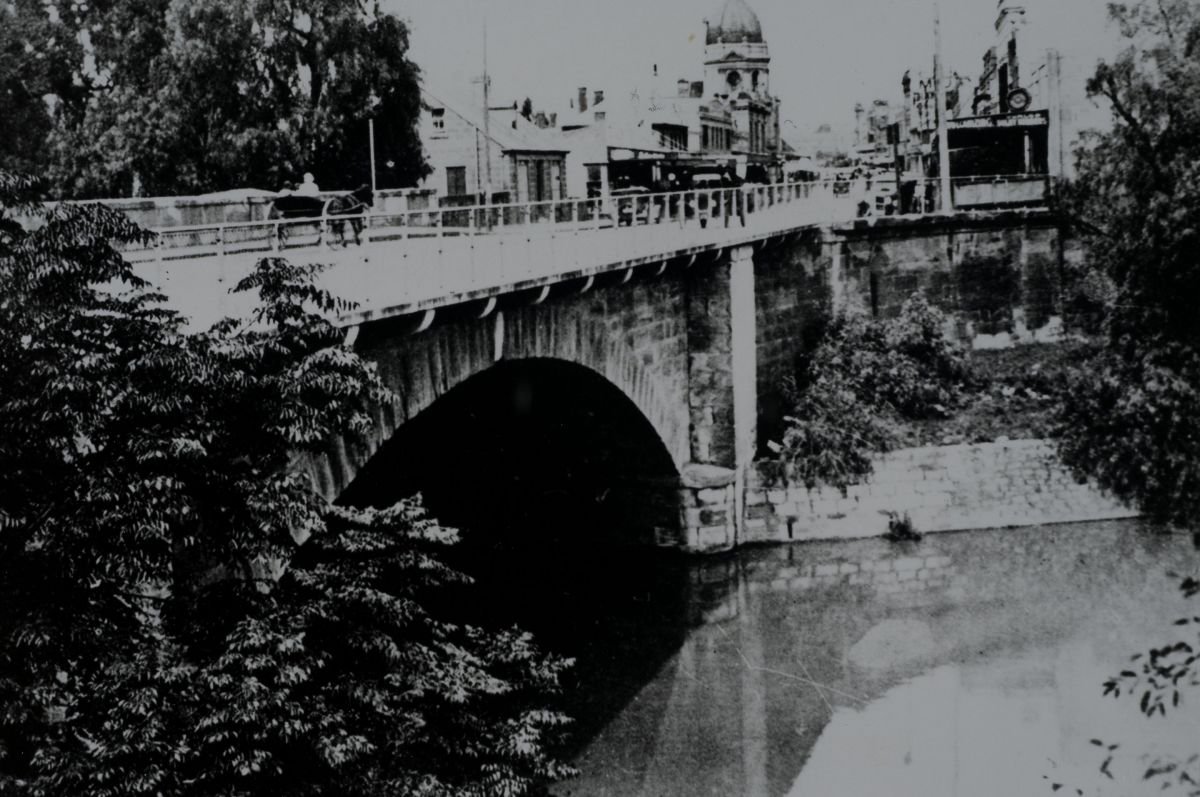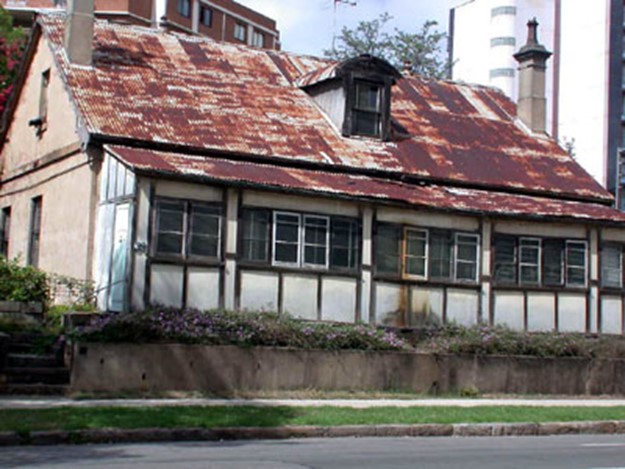
David Lennox the bridge builder was born in Ayr, Scotland in 1788. He was initially employed as a stonemason and was later the foreman in the construction of the stone bridge across the Severn in Gloucester and the Menai suspension bridge in north-west Wales, both designed by the engineer Thomas Telford. For over twenty years he held positions of high responsibility in the execution of public works across England. In 1828 his wife Jane nee Romie died after a long illness and this in addition to the economic crisis in England at the time seems to have prompted his interest in seeking employment in New South Wales. On the 11 August 1832 Lennox arrived in Sydney as an unassisted migrant on the ship Florentia. Lennox arrived alone leaving his two daughters Mary and Jane in Ayr until he was able to provide for them in his new home. Mary and Jane finally migrated to Sydney in 1837.
Despite his enormous experience building bridges in England, Lennox was first employed in Sydney by the Surveyor General Sir Thomas Mitchell as a stonemason coping stone for the wall of the Macquarie Street hospital. The Surveyor General noticing the high quality of the work recommended Lennox to the Governor Sir Richard Bourke which resulted in his appointment as Sub-Inspector of Bridges by October 1832 and Superintendent of Bridges by June 1833.
The first bridge that Lennox worked on, and which required substantial experience, was the bridge at Lapstone Hill. This bridge was built from 1832 to 1833 and was named Lennox Bridge. It is the oldest surviving Australian mainland stone arch bridge and is currently owned by the Blue Mountains City Council.
One of the earliest priorities for Parramatta was to build a wharf which became known as the ‘Landing Place’, then ‘The King’s Wharf’, and was just east of the current Gasworks Bridge. As this wharf was eventually unable to accommodate the growth of river traffic a new wharf slightly east to the King’s Wharf was built. This wharf was named Queen’s Wharf and Lennox was commissioned to complete the work. Work on the wharf commenced in March 1834 and was completed in January 1835. Queen’s Wharf was the major wharf for all water transport between Sydney and Parramatta.
Over the next few years Lennox built many other bridges including the Wingecarribee River Bridge at Berrima, Duck Creek Bridge on Parramatta Road and most significantly Landsdowne Bridge over Prospect Creek. He was also responsible for the construction of a dam across George’s River for the supply of water to the Town of Liverpool. The work on the Liverpool Dam was completed around August 1836.
In 1838 the requirement to mark out the boundaries of the town of Parramatta was deemed necessary. Under the Towns Police Act this work was carried out with the use of boundary stones which were designed by Lennox. Nine stones were erected by Lennox and inscribed by John Weston. Many have been removed from their original locations often for preservation requirements.
Lennox’s major contribution to Parramatta and the last bridge he completed in New South Wales before moving to Victoria was the Lennox Bridge which crosses the Parramatta River on Church Street. In 1833 Lennox reported on the existing bridge at that location and submitted plans for a replacement structure. On November 23 1836 a foundation stone for the new bridge was laid by Governor Bourke, and by September 1838 a section of the new bridge was opened to the public. The bridge was finally completed in 1839 and was officially named Lennox Bridge by Parramatta Council in 1867.

Lennox Bridge, Parramatta, view of west side of bridge from street level position on north bank of river, 1928. Source: LSP 00808
In recognition of his contribution to Parramatta, Lennox was appointed District Surveyor to the Parramatta District Council in November 1843. He only held this position for one year as the Governor George Gipps appointed him Superintendent of Bridges at Port Phillip, a local government area of Victoria. His departure was met with much regret, as not only was his work highly respected but he was at this time a resident of Parramatta and very much active in the Parramatta community. A public dinner was held by his friends in his honour on the 18 November 1844 at the Australian Arms Hotel on the corner of Church and George Streets. The Parramatta Chronicle and Cumberland General Advertiser reported:
“Covers were laid for 26…Several very excellent speeches were made on the occasion, amongst which we cannot refrain from noticing that of Mr. Lennox. After the removal of the cloth a silver snuff box was presented to Mr. Lennox, as a ‘testimonial of the esteem of his fellow townsmen.’ The company spent a most convivial evening, and separated at an early hour in the morning.”
For the next nine years Lennox lived in St Kilda, Melbourne, and was in charge of all bridge construction and other public works in Port Phillip. He built 53 bridges over this period, the most significant being the Prince’s Bridge which crosses the Yarra River in Melbourne.

Lennox House: 39 Campbell Street, Parramatta. Source: Heritage NSW
In November 1853 Lennox retired from his position as Superintendent of Bridges and a few years later in 1855 returned to Parramatta. He designed and built a large mid-Victorian brick cottage with an attic and timber columns in Campbell Street, Parramatta, and it was in this cottage that he lived with his widowed daughter Jane Rowling. Jane’s husband Charles William Rowling who had been a councillor of the City of Melbourne died in July 1853. Lennox’s eldest daughter Mary who had married George Urquhart died in October 1841. Lennox spent the rest of his retirement in this cottage, and died at his residence on the on the 11 November 1873. After his death the cottage was sold by his daughter Jane to Henrietta Lyons. The cottage still stands today.
David Lennox is buried at St John’s Cemetery Parramatta in the shared family plot with his daughter Mary and son-in-law Charles Rowling. Due to a clerical oversight the plot does not bear his name but it is located in Section 1, Row D, Plot 9.
![]()
Caroline Finlay, Regional Studies Facilitator, Parramatta Heritage Centre, City of Parramatta, 2021
References
Selkirk, H. (1920). David Lennox, the bridge builder and his work. JRAHS, volume 6.
Parramatta History and Heritage. (2014). Lennox Bridge, Parramatta, 1836-1839. Retrieved from https://historyandheritage.cityofparramatta.nsw.gov.au/blog/2014/01/02/lennox-bridge-parramatta-1836-1839
Wikipedia Contributors. (2021). Lennox Bridge, Glenbrook. In Wikipedia, the free Encyclopaedia. Retrieved from https://en.wikipedia.org/wiki/Lennox_Bridge,_Glenbrook
Watson, J. (2000). Men of Parramatta. Parramatta: Parramatta & District Historical Society.
Antill, J.M. (1967). Lennox, David (1788–1873). Australian Dictionary of Biography. Retrieved from https://adb.anu.edu.au/biography/lennox-david-2350
Police Intelligence - Public Dinner. (1844, November 23). Parramatta Chronicle and Cumberland General Advertiser. Retrieved from http://nla.gov.au/nla.news-article228248563
McClymont, J. (2010). James Houison 1800-1876 Parramatta’s Forgotten Architect. Parramatta: Parramatta & District Historical Society, pp. 117-118.
Heritage NSW. (2002). Lennox House (and adjoining brick wall on footpath). Retrieved from https://apps.environment.nsw.gov.au/dpcheritageapp/ViewHeritageItemDetails.aspx?ID=2240096


